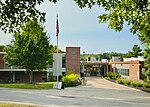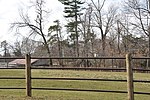Fruitlands Museum

Fruitlands Museum in Harvard, Massachusetts, is a museum about multiple visions of America on the site of the short-lived utopian community, Fruitlands. The museum includes the Fruitlands farmhouse (a National Historic Landmark), a museum about Shaker life, an art gallery with 19th-century landscape paintings, vernacular American portraits, and other changing exhibitions, and a museum of Native American history. In 2023, readers of USA Today voted to name Fruitlands as one of the ten best history museums in the United States.Visitors can tour the farmhouse, which has been restored to appear as it did during the 1840s, and exhibits about Transcendentalism and the Alcott family. Fruitlands offers a diverse schedule of contemporary exhibits, lectures, outdoor concerts and easy walking trails. There is also a museum store and restaurant. The properties are overseen by The Trustees of Reservations.
Excerpt from the Wikipedia article Fruitlands Museum (License: CC BY-SA 3.0, Authors, Images).Fruitlands Museum
Still River Road,
Geographical coordinates (GPS) Address Nearby Places Show on map
Geographical coordinates (GPS)
| Latitude | Longitude |
|---|---|
| N 42.493611111111 ° | E -71.613055555556 ° |
Address
Still River Road 175
01467
Massachusetts, United States
Open on Google Maps











